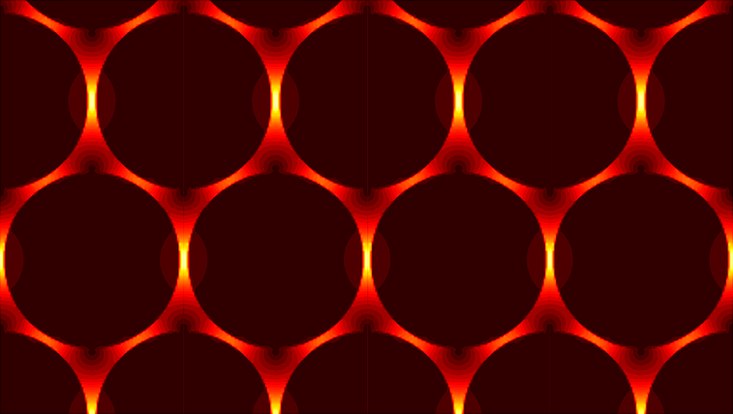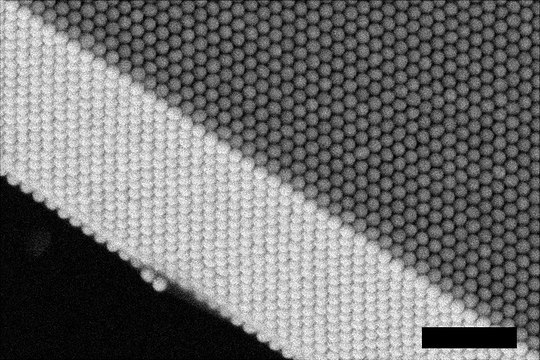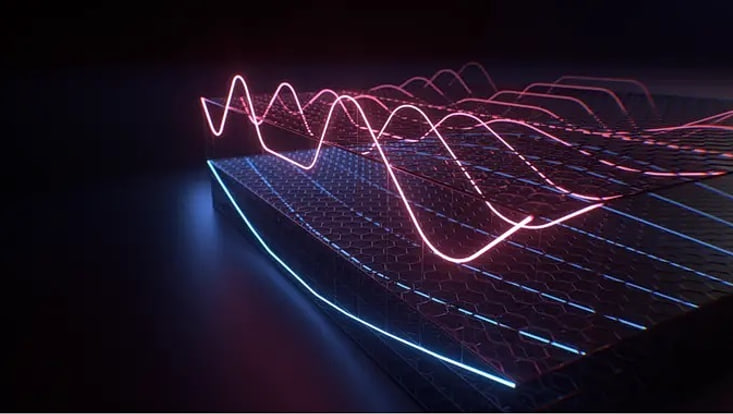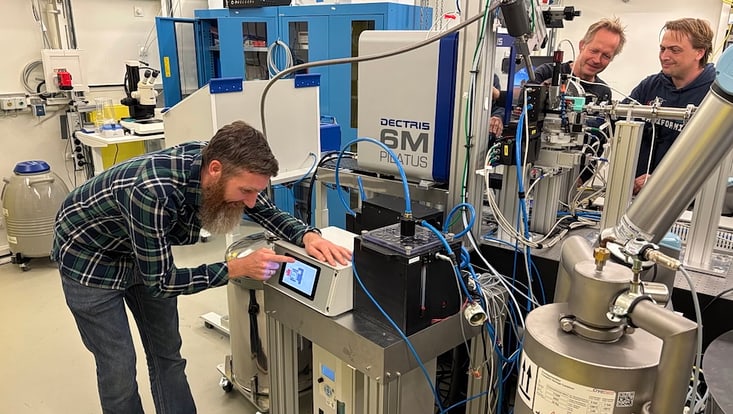Imaging of Matter
Record in light-matter coupling
30 July 2020

Photo: AG Lange, CUI / AG Reich
A research cooperation between Freie Universität Berlin, Universität Hamburg and the Federal University of Ceará (Brazil), has realized a new concept that can take the coupling of light and matter to new dimensions. The result is a mixed light-matter state that could enable highly efficient light conversion, the "braking" and shaping of light, and new laser concepts. The scientists report on their findings in the journal "Nature", which are significant for a broad field of scientific disciplines - from quantum information processing to the life sciences.
The interaction between light and matter is one of the most fundamental processes in physics. The understanding of this process is currently based on the so-called weak light-matter coupling: When light hits matter, a charge displacement (polarization) usually occurs in which the matter either absorbs, emits or scatters the photons. However, the properties of the different states of matter are not changed by the light. For this reason, scientists use light to study excited states in materials.
"This understanding breaks down when light couples strongly to matter and thereby changes its physical and chemical properties", explains Dr. Holger Lange from the Cluster of Excellence "CUI: Advanced Imaging of Matter". This is the case, for example, at the outermost limit of light-matter coupling, in deep strong coupling. Here light and matter form a common, hybrid state (polaritons) and novel nonlinear processes become possible, such as the collective emission of a single photon by several atoms.
Nanoparticles are particularly interesting
However, experimental proof in the optical spectral range and at room temperature has so far not been successful, since the interaction of electrons and photons is weak in most materials. "Against this background, metal nanoparticles are particularly interesting," explains gold nanoparticle expert Dr. Florian Schulz. "Because in these particles, plasmons, which are collective oscillations of mobile electrons, interact strongly with light. A quantum optical effect has already been documented by the research group around Holger Lange. (DOI: 10.1021/acs.nanolett.6b00982).

A research group led by Prof. Stephanie Reich of the FU Berlin, has now developed a new concept to achieve new regimes of interaction between light and matter: In doing so, the scientists coupled the plasmons in a crystal of metal nanoparticles and thus created collective plasmonic states. Within the crystal, specific plasmonic modes are created that couple to light in a deep, strong coupling regime. "The challenge was to develop such crystals on the relevant time scales, i.e. at optical wavelengths, with sufficient periodicity and uniformity and to determine the light-matter coupling strength of the crystals," explains Lange.
New self-organizatin protocol developed
His group has succeeded in developing a new self-organization protocol and, on this basis, in synthesizing crystals of gold nanoparticles on relevant scales. Microscopic absorption experiments revealed that the crystals exhibit record-breaking light-matter interaction at room temperature. "Our system is the first to enter a deep strong light-matter coupling at optical frequencies," says Lange. The researchers discovered that light behaves completely differently within such crystals: By forming coupled light-matter modes, gold suddenly becomes transparent for certain wavelengths, while absorbing all the light at slightly different wavelengths. Within the crystals, the speed of light is reduced by orders of magnitude and new optical effects evolve.
The theoretical evaluation was partly carried out at the Federal University of Ceará in Brazil.
Thanks to these results, research now has a new material platform at its disposal to investigate a new regime of light-matter coupling. The crystals can be synthesized from nanoparticles of different metals and different shapes. Lange: "The potential applications of our work range from fundamental studies of quantum electrodynamics, quantum technologies, nanophotonics and nonlinear optics to analysis in chemistry and the life sciences. Text CUI
Citation:
N. S. Mueller, Y. Okamura, B. G. M. Vieira, S. Juergensen, H. Lange, E. B. Barros, F. Schulz, St. Reich
"Deep strong light–matter coupling in plasmonic nanoparticle crystals"
Nature 583, 780 – 784 (2020)
DOI: 10.1038/s41586-020-2508-1
The synthesis of the super crystals is described in more detail in another publication:
F. Schulz, O. Pavelka, F. Lehmkühler, F. Westermeier, Y. Okamura, N. S. Mueller, S. Reich, H. Lange
"Structural order in plasmonic superlattices"
Nature Communications (2020)


